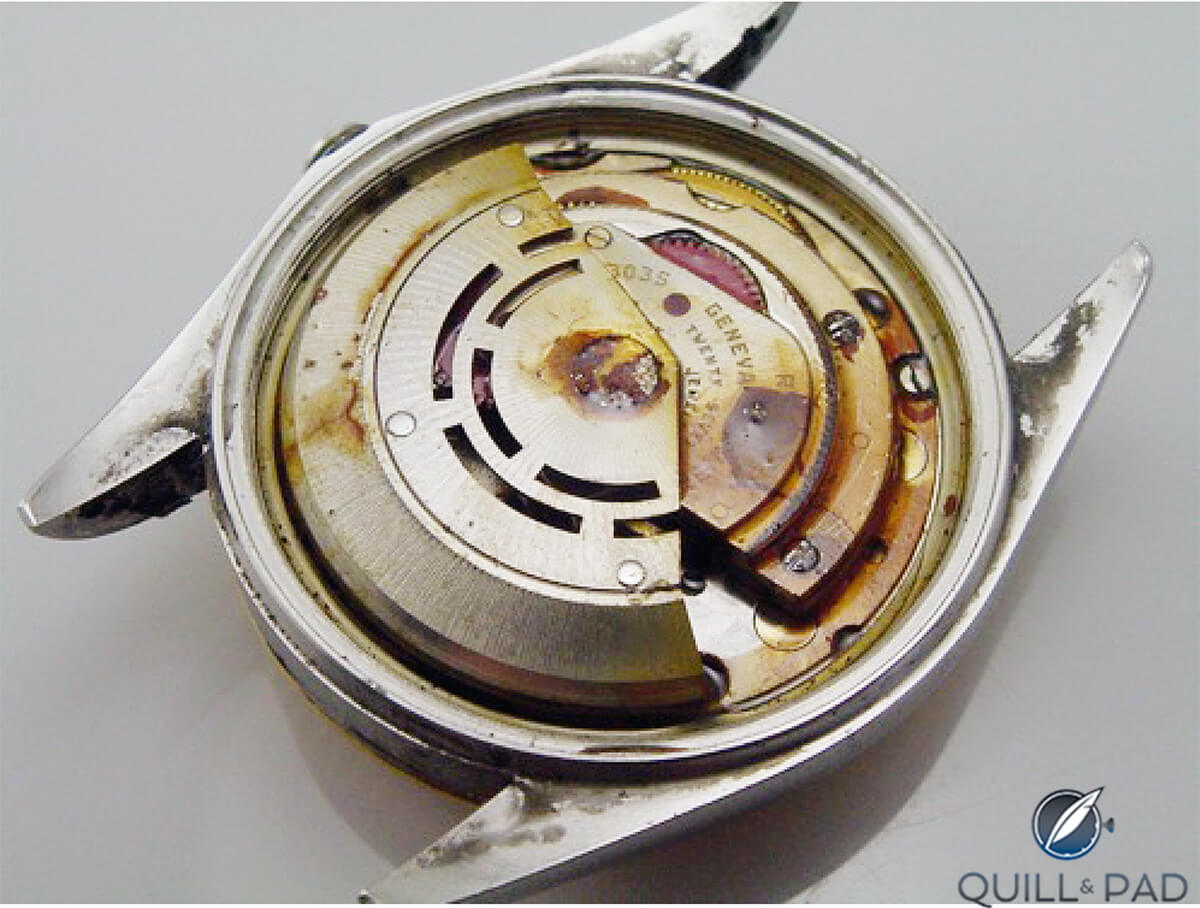Credits: Article and images by John Keil @ Quill & Pad. See the original article here - https://quillandpad.com/2023/07/30/5-unexpected-ways-you-might-damage-a-mechanical-watch/
———————————————————————————
Cross threading the crown while screwing back into the case
A screw-down crown on a watch, common on diving and sports watches, helps to maintain the added depth rating by keeping the stem snugly secure in the sealing gasket. After winding or setting a watch with a screw-down crown, it is necessary to screw the crown back in correctly. This ensures proper water integrity.
Result: If the crown is slightly out of alignment when you screw it back in, the threads of the tube and crown may cross and cause permanent damage.
Prevention: Simply take your time screwing the crown back in! A crown should rotate at least 1.5 full turns, but only up to three full turns, while being screwed in. If the crown seems to stop very quickly (under one full turn), do not force it. In fact never force anything on a watch.
Back down, unscrew fully, and attempt again.
The winding stem is not sealed by screwing in (that’s the job of the rubber seal), a screw-down crown just minimizes the risk of the stem moving in the seal while under water.
Keep in mind, you do not ever have to torque your crown down too tightly – just until it stops is fine. It is possible to screw it down so tightly that it can be all but impossible to unscrew.
Each watch has its own personality, and until you become comfortable with any particular piece, don’t push it. Get to know your watch.
Using a chronograph while the watch is submerged
Some may ask, “Why would anyone use a chronograph underwater?” I may answer, “You can’t believe the things people do.”
And while this is rare, I did have a client once who came in with a badly water-damaged watch. When I asked how this happened, he told me that he was on vacation and he and his kids were timing how long they could stay underwater. I guess the watch lost!
Result: Most chronographs are water-resistant to at least some degree. The chronograph pushers hold water at bay with no problem in their normal positions, however when a pusher is pushed into the case it can compromise the seal and allow water to enter, causing major water damage.


Rust on a watch movement is is not a pretty sight (image courtesy Gevril Group)
Because parts of a watch movement are small and metal they can quickly rust and dials and hands can discolor. This can be a very pricey repair, while in some cases it can “total” the watch, leaving the repair cost higher than the residual value of the whole timepiece.
Prevention: Do not use your chronograph while underwater!
In addition, some watches have screw-down chronograph pushers. If your watch has these, be sure that they are screwed in.
———————————————————————————
Credits: Article and images by John Keil @ Quill & Pad. See the original article here - https://quillandpad.com/2023/07/30/5-unexpected-ways-you-might-damage-a-mechanical-watch/











